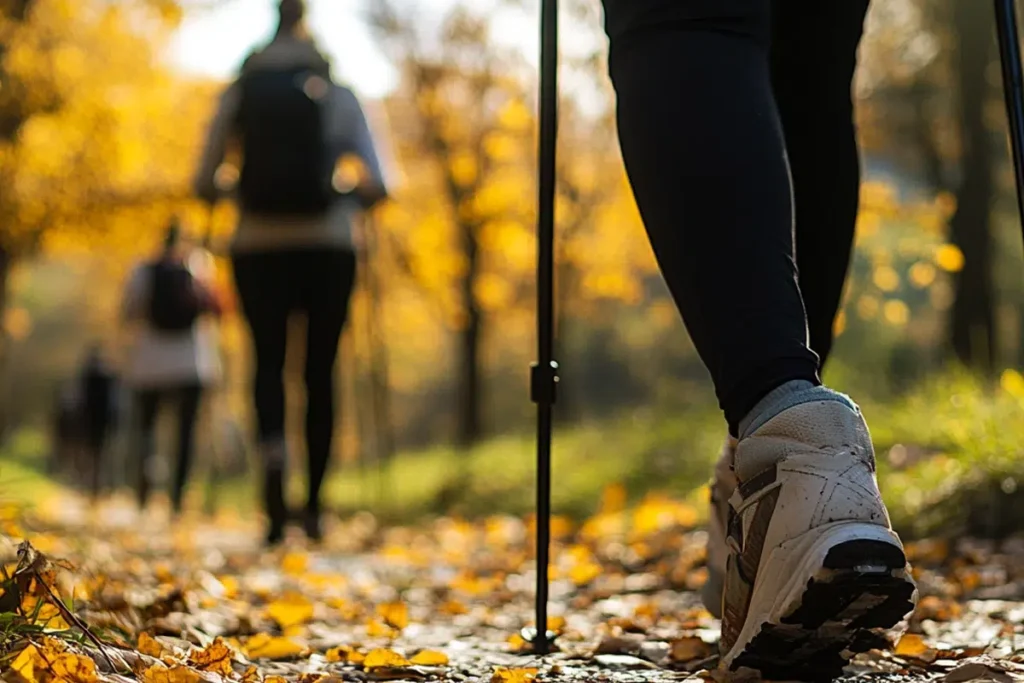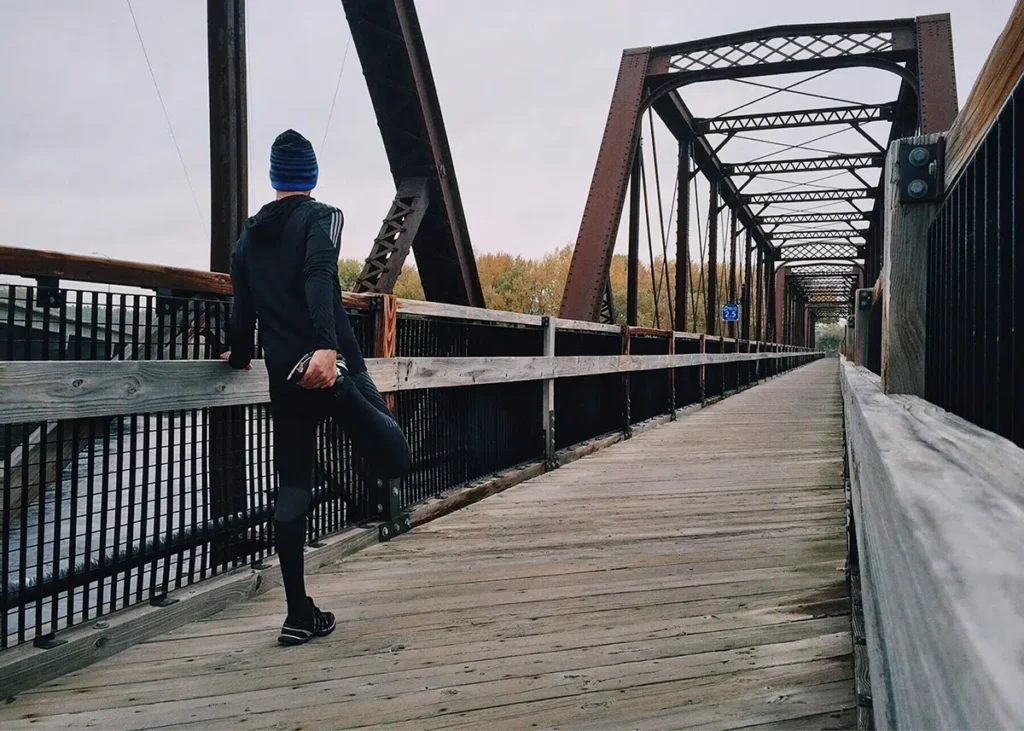Nordic walking and race walking are two popular physical activities that are perfect for maintaining fitness while enjoying the benefits of exercising outdoors. But what makes each unique? Which activity is right for you? Let’s explore their characteristics, techniques, and benefits to better understand their differences.
What is Nordic Walking?
Nordic walking is a full-body workout that utilizes specialized poles. This activity originated in Finland during the 1960s as a summer training method for cross-country skiers.
Main Characteristics:
- Involves the use of poles to propel the body forward, engaging both the arms, shoulders, and legs.
- Promotes an upright and dynamic posture, enhancing stride length.
- Maintains a steady rhythm that can be adjusted to suit all fitness levels.
Benefits of Nordic Walking:
- Works 90% of the body’s muscles due to the involvement of both upper and lower limbs.
- Enhances cardiovascular endurance and overall muscle strength.
- Reduces joint strain thanks to the use of poles.
What is Race Walking?
Race walking, often referred to as brisk walking, involves walking at a quick pace without the assistance of poles. This activity is simpler to engage in, requiring minimal equipment.
Main Characteristics:
- Features a rapid cadence, typically between 5 and 8 km/h.
- Involves a slightly forward-leaning posture, with bent arms to assist the leg movements.
- Emphasizes a continuous, rhythmic walking style.
Benefits of Race Walking:
- Strengthens the leg muscles and enhances endurance.
- Stimulates the cardiovascular system through sustained effort.
- Highly accessible: it can be performed anywhere by anyone.
What is the Speed for Nordic Walking and Race Walking?
Nordic Walking:
- The average speed ranges from 6 to 9 km/h, which may vary based on terrain (flat, inclines, declines) and the experience level of the participant.
Race Walking:
- The speed typically falls between 5 and 8 km/h, depending on the level of exertion applied.
Tip: Consider using a smartwatch or mobile application to monitor your speed and performance.
Techniques for Effective Practice
Techniques for Nordic Walking:
- Hold your poles at a slight backward angle.
- Extend your stride by firmly pushing off with the poles.
- Synchronize your movements: the right arm and left leg move forward together, and vice versa.
- Maintain an upright posture with your eyes gazing forward.
Techniques for Race Walking:
- Adopt a natural yet brisk walking pace.
- With a slight bend in your arms, swing them to match the rhythm of your legs.
- Lean your torso slightly forward for added dynamism.
- Deeply breathe to sustain a steady heart rate.
Which Type of Walking Should You Choose?
Nordic Walking:
- Ideal for those seeking a comprehensive workout that engages the entire body.
- Recommended for individuals wanting an intensive muscle workout or those with joint pain.
Race Walking:
- Perfect for beginners or anyone looking for a simple and accessible form of exercise.
- Suitable for those who wish to enhance their endurance without needing specific equipment.
In Summary: Differences Between Nordic Walking and Race Walking
While both activities share similarities, their unique characteristics clearly set them apart:
Nordic Walking vs Race Walking
| Aspect | Nordic Walking | Race Walking |
|---|---|---|
| Equipment | Specialized Poles | None |
| Average Speed | 6 to 9 km/h | 5 to 8 km/h |
| Muscles Engaged | Upper and Lower Limbs | Mainly Legs |
| Technique | Coordinated Use of Poles and Legs | Natural Arm and Leg Movement |
| Target Audience | Great for full-body workouts and joint pain relief | Accessible to all fitness levels |
Both Types of Walking: An Asset for Your Health!
Whether you choose Nordic walking or race walking, both activities are excellent for your physical and mental health. The decision will depend on your goals, fitness level, and personal preferences.
Share your experiences and tips with our community on X and Facebook. Together, let’s motivate each other to move more for enhanced well-being and to stay fit every day!
- Calculating energy expenditure for Nordic walking
- Calculating energy expenditure for race walking







